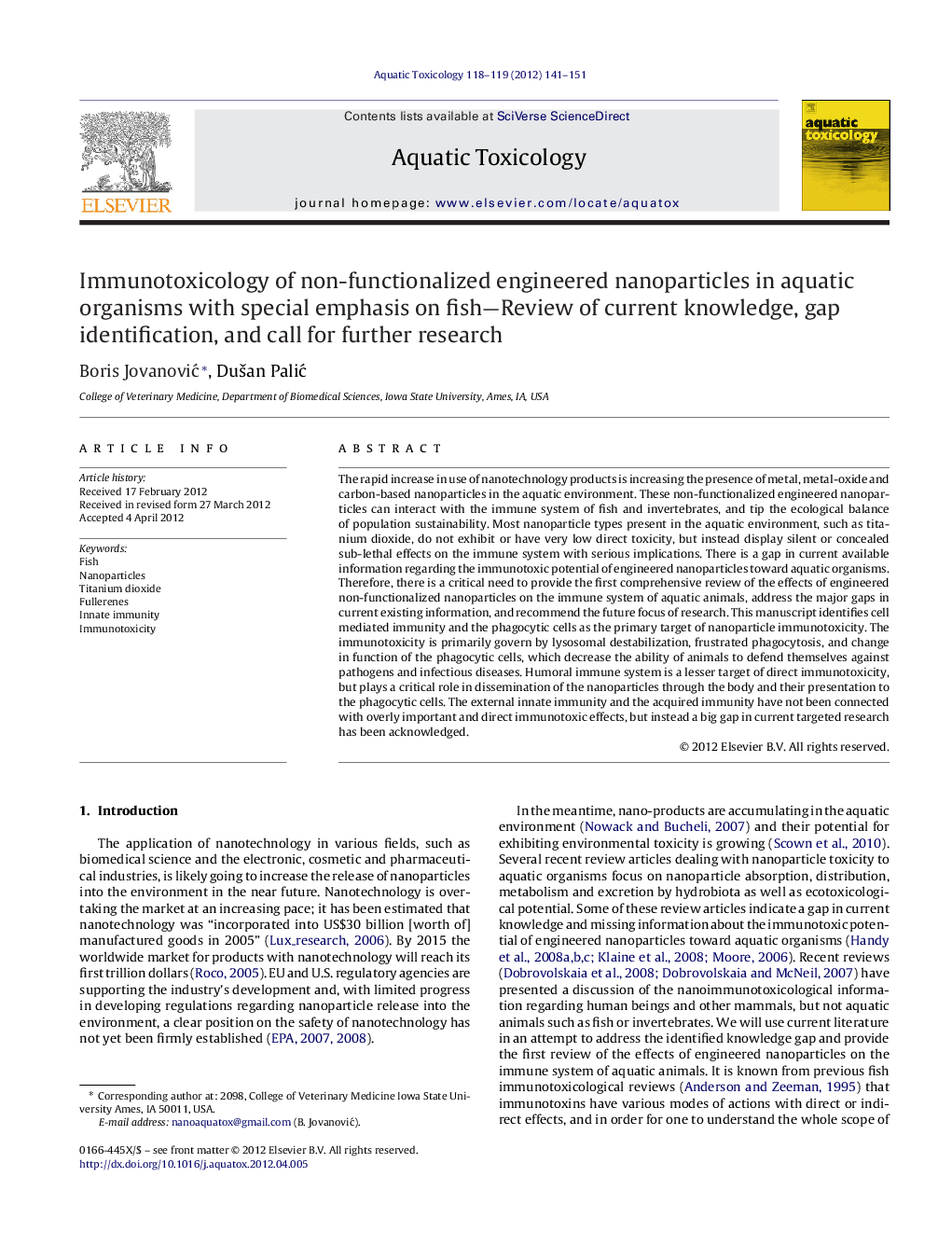| Article ID | Journal | Published Year | Pages | File Type |
|---|---|---|---|---|
| 4529727 | Aquatic Toxicology | 2012 | 11 Pages |
The rapid increase in use of nanotechnology products is increasing the presence of metal, metal-oxide and carbon-based nanoparticles in the aquatic environment. These non-functionalized engineered nanoparticles can interact with the immune system of fish and invertebrates, and tip the ecological balance of population sustainability. Most nanoparticle types present in the aquatic environment, such as titanium dioxide, do not exhibit or have very low direct toxicity, but instead display silent or concealed sub-lethal effects on the immune system with serious implications. There is a gap in current available information regarding the immunotoxic potential of engineered nanoparticles toward aquatic organisms. Therefore, there is a critical need to provide the first comprehensive review of the effects of engineered non-functionalized nanoparticles on the immune system of aquatic animals, address the major gaps in current existing information, and recommend the future focus of research. This manuscript identifies cell mediated immunity and the phagocytic cells as the primary target of nanoparticle immunotoxicity. The immunotoxicity is primarily govern by lysosomal destabilization, frustrated phagocytosis, and change in function of the phagocytic cells, which decrease the ability of animals to defend themselves against pathogens and infectious diseases. Humoral immune system is a lesser target of direct immunotoxicity, but plays a critical role in dissemination of the nanoparticles through the body and their presentation to the phagocytic cells. The external innate immunity and the acquired immunity have not been connected with overly important and direct immunotoxic effects, but instead a big gap in current targeted research has been acknowledged.
